Monday newsletters always feature top 10 travel lists to inspire.
Today: Top 10 best things to see & do in Antarctica
Antarctica is the ultimate journey on the bucket list of many travelers. Whether you’re drawn to Antarctica’s unique fauna & flora, its sheer isolation or its legendary reputation, you will find nothing like the planet’s most remote place, never mind seeing it with your own eyes. The coldest, driest, and windiest place in the world, Antarctica’s desolate, frozen landmass also is the closest most people will ever get to be on another planet without leaving Earth (unless you’ve already booked your ticket on the Virgin Galactic shuttle). Two centuries after its discovery in 1820, Antarctica remains almost as elusive and mythical as during the days of its earliest exploration, and those travelers lucky enough to visit the White Continent talk about an unforgettable, life-changing experience with otherworldly landscapes and beguiling wildlife (count me in). Here’s my top 10 list of the best things to see & do during a trip to Antarctica.
There is more information below the slideshow. Think I forgot an attraction? Leave a comment.
*** Get the most out of your (luxury) trip to Antarctica with my online Antarctica travel guide ***10. TRAVEL TO ANTARCTICA BY CRUISE SHIP
The most common way to travel to Antarctica is by ship from South America, usually Ushuaia (Argentina) or Punta Arenas (Chile). Departing from Ushuaia is by far the most popular route to take when going to Antarctica, as this port city is located closer to Antarctica than Punta Arenas, hence less time is spent traveling to Antarctica and more time is spent on the continent itself. These trips – ranging from 9 to 30 days – involve a crossing of the iconic Drake Passage, a journey which takes about 2 days (one way) along one of Earth’s roughest seas (with waves that can be up to 18 m or 60 ft tall). Several companies as well as some more-traditional cruise line offer expedition cruises to Antartica. The two most luxurious options are Silversea Cruises – which travels to Antarctica with its brand new ultra-luxury expedition vessel Silver Endeavour – and Cookson Adventures – which cruises to Antarctica with Legend, a former Russian icebreaker completely overhauled and refitted by ICON Yachts in 2015.
9. MAKE A STOP-OVER ON THE SUB-ANTARCTIC ISLANDS
Even though the White Continent has more than enough attractions to fill any expedition program, it’s common for Antarctica cruises to make landfall on two sub-Antarctic islands during their itineraries: the Falkland Islands and South Georgia. These overseas territories of the UK – located halfway between Argentina and Antarctica – are great sea life and birdwatching locations shelters, especially South Georgia because of its overwhelming numbers of breeding penguins and seals. For example, the island is home to 450,000 pairs of King penguins, which is about half the world’s population. The colony on South Georgia also boasts the largest nursery of baby Kings on the planet and is often referred to as the largest crèche in the world. Many people who head to the South Georgia have kKing penguin watching in mind (the second largest penguin species in the world), but the island is also home to 3 million breeding pairs of Macaroni Penguins, the largest penguin population in the world.
8. VISIT A SCIENCE RESEARCH STATION
Being the most remote place on earth, scientists from around the world flock to Antarctica to perform a lot of cutting edge research. There are currently 70 permanent research stations scattered across the White Continent, which represent 29 countries from across the planet. Together, these countries, or ‘signatories’ of the Antarctic Treaty, are committed to the preservation and conservation of the White Continent. McMurdo Station, operated by the USA, is the largest and most famous Antarctic station, while Belgium’s Princess Elisabeth Station is the most modern and the only zero emission polar research station. Due to its geographic location, the most visited center is Vernadsky Station, a former British research base transferred to Ukraine in 1996. Named after Russian and Ukrainian mineralogist Vladimir Vernadsky, this station is located on Galindez Island and boasts a lounge that serves as the ‘Southernmost Bar in the World’, as well as a post office where visitors may send mail from Antarctica.
7. SPOT WHALES
Antarctica is the perfect place for close encounters with whale. Humpback whales are the most abundant whale species in the icy waters around the Antarctic Peninsula. They, along with millions of penguins, seals, seabirds, and other whales, feed primarily on Antarctic krill during the Austral summer months (November to February) and there are few displays as exciting on an Antarctica cruise as a humpback whale lobtailing right in front of the boat. Watching the whales from a cruise ship gives you a better viewing angle, but small guided zodiac excursions can get you closer to the action and allow you to follow a pod as the whales breach and dive together beneath the snowy sky. Seeing humpback whales in Antarctica is also a powerful symbol of their resiliency. Hunted to the brink of extinction before the International Whaling Commission intervention in the 1960s, humpback whales in the Southern Ocean have rebounded and returned to their historical feeding grounds around Antarctica.
6. KAYAK AROUND ICE BERGS – OR SCUBA DIVE UNDER THEM
Few things will get you closer to Antarctica’s rugged scenery than kayaking. In a kayak, you can get away from the noise of the motorized vessels and enjoy the spectacular landscape in a pure way while keep a steady rhythm with your paddles. You’ll see marine life, crystal clear waters and shimmering icebergs that turn the water beneath you a brilliant blue. You may even spot some local wildlife, and when you’re lucky, you may encounter a humpback whale breaching right next to your kayak. If you’d rather see Antarctica’s natural treasures from an underwater perspective instead of from a kayak, consider polar scuba diving. Scuba diving in Antarctica is not for beginners as it’s both technical and challenging, and it’s for everyone as some be turned off by the cold weather and lack of modern aids in Antarctica( such as decompression chambers). Nonetheless, true diving enthusiasts who want something off the beaten track will be dazzled by the White Continent’s exotic wildlife and the raw underwater beauty.
5. LAND ON A BLUE ICE RUNWAY IN A CHARTERED JET
White Desert is the first and only operator taking guests into the rarely seen interior of Antarctica. The flights from Cape Town, South Africa, to Antarctica are operated in privately chartered jets – either a Gulfstream G550 or an Airbus A340 – and take around 5 hours. Both planes have wide oval windows, which offer incredible views of the icebergs of the Southern Ocean. The last part of the flight is extremely scenic as the giant aircraft slowly descends over the magical Antarctic landscape on its way to Wolf’s Fang runway, a blue ice runway overlooked by one of the most magnificent and iconic mountains on the entire continent, named ‘Wolf’s Fang’ by the early Norwegian explorers. Guest can book the flight as a day trip (with three hours on the ground in Antarctica) or opt to stay at one of White Desert’s luxury camps in Antarctica (with activities including hiking, abseiling, fat biking, and trips to the South Pole & Emperor penguins). Read my review of White Desert’s A340 flight to Antarctica here.
4. SCALE AN ANTARCTIC SUMMIT
The Antarctic continent lies on a large landmass, almost completely covered with ice and snow. Underneath that smooth ice sheet – which can be up to 4 km (2.5 mi) thick – are thousands of mountains and valleys. Only in a few places do these mountain peaks break through Antarctica’s ice sheet and one such place is the Holtedahl Mountain Range, a collection of spectacular peaks in Queen Maud’s Land, creating an otherworldly landscape unlike any found elsewhere on Earth. With White Desert, travelers can reach the base of these mountains, either by 4×4 Arctic truck or by walking across a glacier (or by a combination of both). Under the care of expert mountain guides, taking advantage of 24-hour sunlight and with the right gear (thin ice axes and crampons), beginners and experienced hikers alike can summit a peak where few humans have stood before. These nunataks (summits or ridges of mountains sticking out of an ice field or glacier) have creative names such as Cheesegrater, T-Rex, Shark’s Fin and Snowbird Mountain.
3. STAY AT A LUXURY CAMP
Pioneering luxury travel in Antarctica, White Desert is the only company with 3 luxury camps on the 7th Continent: Echo, Whichaway and Wolf’s Fang. Each camp offers luxuriously appointed accommodation and hosts up to 12 people who can savor gourmet meals, enjoy a sauna with view of the glacier, or sip cocktails made with 10,000 year old ice. All three White Desert’s camps have been designed to be dismantled, leaving no trace on the Antarctic landscape.
- Whichaway is a collection of cutting-edge pods with breathtaking views across the freshwater lakes of the Schirmacher Oasis. The pods’ exteriors are constructed using cutting-edge materials whilst the interiors have an old-world feel that conjures up images of Antarctica’s rich heritage of exploration through sumptuous textures and thoughtful design. The rest of the camp comprises a shower pod (with two hot/cold running water showers), kitchen and three communal pods that make up the reception, lounge and dining room, as well as a yoga pod and a sauna. Read my review of Echo here.
- Echo is White Desert’s brand-new camp, inspired by astronauts and used by explorers. Accommodating up to 12 people in 6 state-of-the-art, “Sky Pods”, the camp is situated at the base of the Henriksen Nunataks, which are mountain peaks that project through the glaciers. Futuristic and luxurious, the six bedrooms are created from composite fibreglass with floor to ceiling windows allowing guests to soak in the moon-like landscape beyond. The rest of the camp comprises a central shower unit, a kitchen, dining and lounge pod
- Wolf’s Fang is White Desert’s adventure base for the modern-day pioneer. The 6 state-of-the-art Arctic tents have been built using cutting-edge materials whilst the interiors hark back to the polar exploration of old, using leather, canvas and quotes from explorers as inspiration. Wolf’s Fang is designed to function as an expedition base camp during season for guests if needed and a launch base for our Expedition Clients looking to create their own Antarctic exploration journey.
https://www.youtube.com/watch?v=9pxy9RJRWAM
2. FLY TO THE SOUTH POLE
A highlight of an Antarctic adventure is a once-in-a-lifetime journey to the Geographic South Pole, one of only two stationary points on our rotating Earth. At exactly 90 degrees of latitude, the South Pole represents a place where there is no more east, south or west – as the only direction is simply north! An excursion to the South Pole is offered as part of some itineraries with White Desert. The first part of the journey is a 5-hour flight in a Basler BT-67 at 3,000m (10,000ft) above the ice, offering sensational views of the High Polar Plateau. After the 5 hour flight, there will be a stop for one hour to refuel at Dixie Camp and then it’s another 2 hours of flying to the South Pole itself. There is a true sense of remoteness at this point where, for as far as the eye can see, the white horizon meets the pure blue sky. The American Amundsen-Scott research station is the backdrop to this most exceptional place, whose discovery ranks as one of the greatest feats of human The Amundsen-Scott exploration ever known.
1. VISIT THE ICONIC EMPEROR PENGUINS
Emperor penguins have the upright and regal bearing that their name suggests as they are the largest of all penguins by a considerable margin. There are about 40 colonies of Emperor Penguins, all of them found around the coast of the Antarctic continent (one of them – a colony of 28,000 birds at Atka Bay – can be visited with the team of White Desert). Breeding begins in autumn when the sea ice becomes thick enough to support the thousands of penguins that gather. During the long, dark winter months, the male penguin carries a single egg on his feet until it hatches, while the female hunts out at sea. While incubating their eggs during the long winters, male Emperor penguins form ‘huddles’ to protect themselves from the harsh weather conditions along the coast that see temperatures drop to -50°C and winds of 200km/h. Towards winter’s end, the chicks hatch and stay on their parents’ feet for almost 2 months. Only 20% of the chicks will survive their first year.
*** Follow me on Instagram, YouTube, Twitter or Facebook for a daily moment of travel inspiration ***

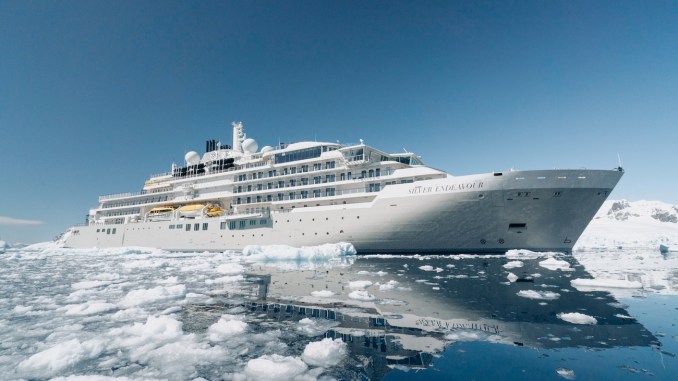
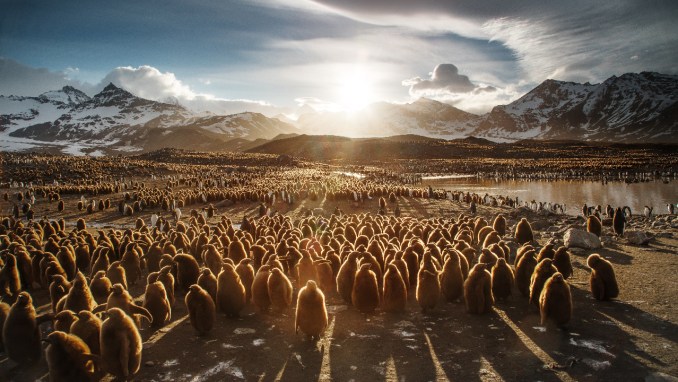
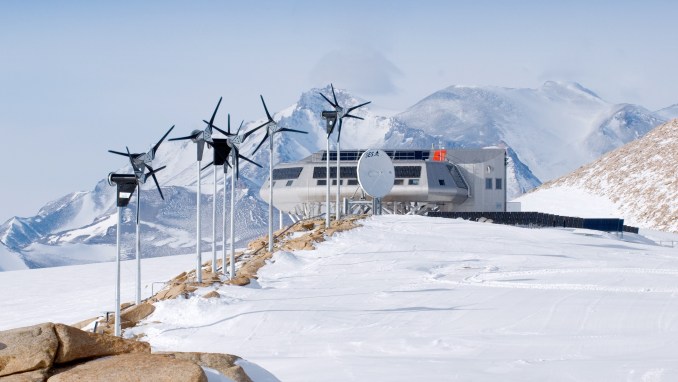
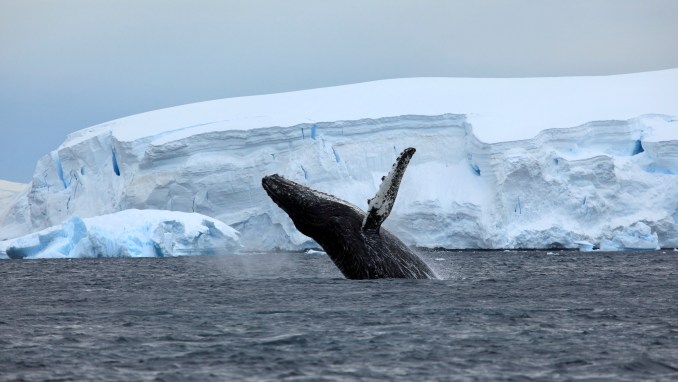
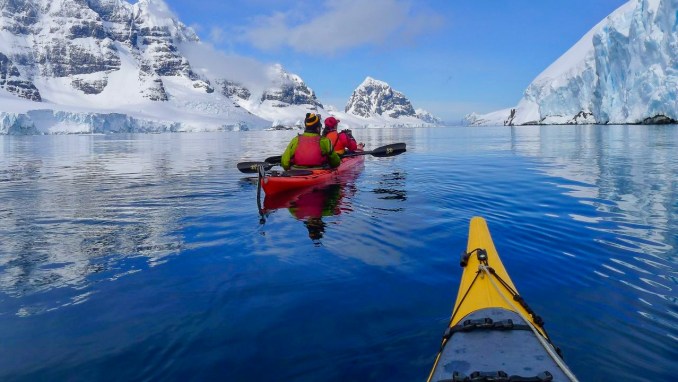
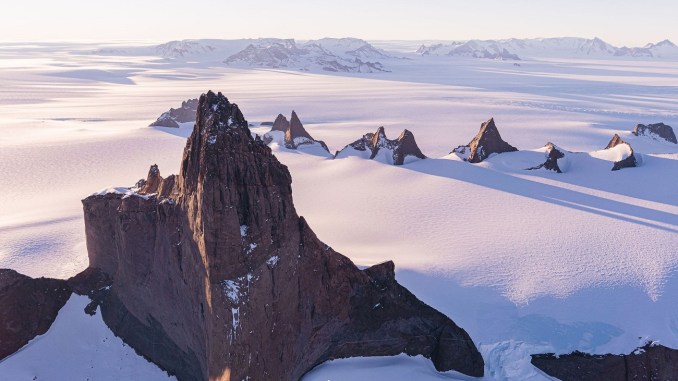
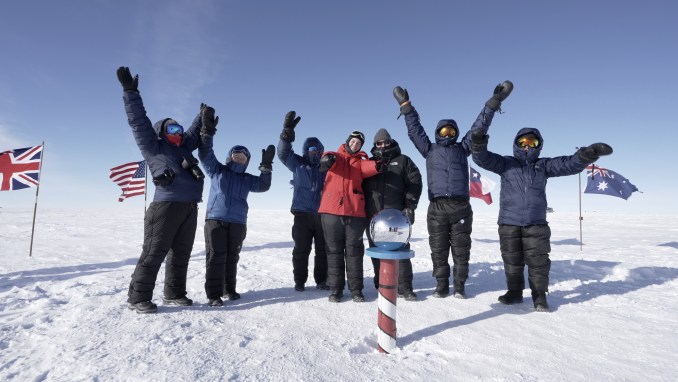
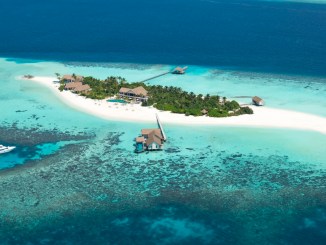
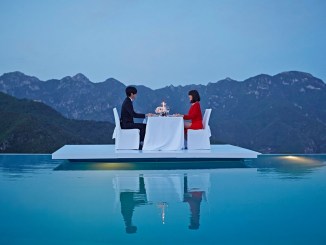

Very nice! Thank you for the great ideas.